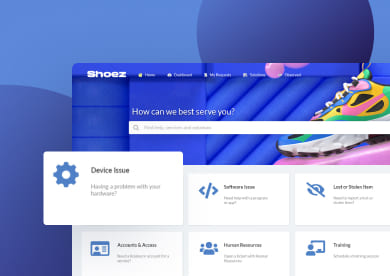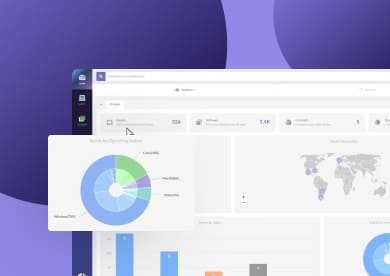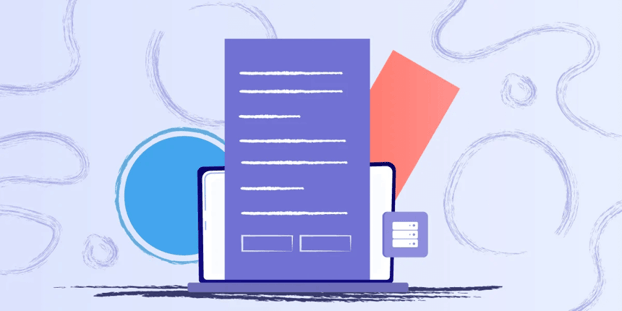Understanding data normalization is not just about the theory, it is about creating systems to standardize and organize data effectively for your IT Asset Management (ITAM) practice. Without it, you can’t truly rely on your databases as they may contain mixed or duplicate assets.
Lacking normalized information can lead to a significant misuse of money, time, and other resources. And, even though some solutions have data normalization integrated (like InvGate Asset Management), many popular tools don’t. This provokes unnecessary complexities for their users. Such is the case for organizations that still use Excel for Asset Management (or for any other purpose, for that matter).
But, as usual, we’re here to help! Keep reading to explore what data normalization is and how you can leverage it to streamline your ITAM operations.

What is data normalization?
Simply put, data normalization cleans up the collected information to make it more clear and machine-readable. Typically, systems gather information in different formats, leading to duplicates or irrelevancies, and ultimately to unnecessary storage costs and difficulties in its understanding.
Through data normalization, the information is made consistent and errors are removed and brought together in a similar format so that it’s easier to interpret and use. Its goal is to reduce redundancy and dependency within the stored information, ensuring its integrity and eliminating anomalies.
Data standardization vs. normalization
It is common to confuse data standardization and normalization. Both practices are essential for effective Data Management, but they address different aspects of organization and quality.
- Data standardization involves bringing information into a consistent format or structure, regardless of the underlying values or scales, and ensuring consistency and compatibility across different data sources.
- Data normalization focuses on organizing and transforming data to eliminate redundancies and improve integrity particularly within a single dataset or database.
Normalized vs. denormalized data
This pair of opposites, on the other hand, corresponds to how the information is structured within a dataset:
- Normalized data is typically favored for transactional systems that require strict data integrity. Normalized databases follow specific rules (typically based on normalization forms), organize information into multiple related tables (each one representing a specific entity or concept), and establish relationships through keys (i.e., primary and foreign).
- Denormalized data is often preferred for analytical systems that prioritize query speed and simplicity. Denormalized databases combine to merge information from multiple tables into a single structure, optimize query performance and simplify data retrieval when efficiency might be hindered by complex relationships, and improves the overall system performance, but with a cost: it involves duplicating data and storing it redundantly.

Why should data be normalized?
Data normalization is crucial for databases and companies due to its impact on effective communication, decision-making, and overall information usability. Messy and unnormalized data poses challenges that hinder human and machine comprehension.
In addition, unorganized data within a database negatively impacts the functionality of features and functions. For example, searching for "Google Chrome" may not yield the same results as searching for "Chrome" due to inconsistencies in data representation. This undermines the accuracy and efficiency of searching and querying processes, leading to less precise results and incomplete connections.
So, normalization makes searching for specific terms or entities more efficient and accurate. Connections between related data elements are strengthened, enabling improved information retrieval and analysis.
Furthermore, this practice also has broader implications for database functionality and performance. Normalized data is easier to sort, filter, and analyze, facilitating data exploration and pattern recognition. With a reduced number of columns and improved organization, users can view more records on a single page, enhancing visualization, understanding and pattern recognition.
On the side of the user experience, it simplifies processes, allowing users to easily access and modify information while ensuring consistency, accuracy, and the absence of duplicates or redundancies. Thus, multiple users can confidently read, interpret, and trust the records presented.
4 benefits of data normalization
Once you implement data normalization in your organization, you will find multiple improvements, and it will make your daily tasks much simpler. The main benefits it will bring you are:
- Easier to sort through data - Normalized data is easy to handle, facilitating your agents’ work.
- More storage space available - When you’re dealing with terabytes and petabytes, data normalization can significantly optimize the storage space.
- Easier to work with data analysis tools - A normalized database can be smoothly connected to data processing tools to visualize and analyze it. Without standardization, these solutions don’t have accurate information to work with and can produce incorrect outputs.
- Better outputs - Cleaner and standardized data produces better results. And you need to be able to rely on that information to make good decisions.
How to normalize data?
Now that you know what it does and how it can benefit your organization, it’s time to learn how to do it. Here's a general process for data normalization, including considerations for tool selection:
- Identify the need for normalization - You should normalize data when there are issues with miscommunication, unclear reports, or inconsistencies in data representation.
- Select appropriate tools - When choosing a solution, look for incorporated data normalization features. For example, InvGate Asset Management not only does the trick, but actually does the whole job for you. This means that it automatically normalizes all the information within your IT inventory to enhance your operations.
- Understand the data normalization process - The process typically involves applying normalization rules or forms. These rules are at the core of the practice, so we’ll see them in more detail later. They guide data restructuring to eliminate redundancies, ensure data consistency, and establish relationships between tables.
- Analyze and assess data relationships - Once you’ve laid down the groundwork, it’s time to start. Examine the relationships between data entities and determine the primary keys, dependencies, and attributes. This helps identify potential redundancies and anomalies that need to be resolved during the normalization process.
- Apply normalization rules - Follow the normalization rules or forms based on the specific requirements of your dataset. This typically includes splitting tables, creating relationships between them using keys, and ensuring that each piece of information is stored in only one place.
- Validate and refine - Verify the information for accuracy, integrity, and consistency. Make any necessary adjustments to address potential issues or anomalies that might have arisen during the normalization process.
- Document the normalized data structure - Maintain proper documentation of the database schema, including table relationships, keys, and dependencies. This helps in understanding the structure and aids future maintenance or updates.
Data normalization forms
Data normalization processes are based on a set of rules or forms to structure and organize information within a dataset. There are five data normalization forms, each with a specific purpose. Let’s take a closer look at them.
First Normal Form (1NF)
1NF focuses on eliminating duplicate data and organizing it into separate tables with a unique identifier or primary key. It ensures that each column in a table contains only atomic values (indivisible), and that there are no repeating groups or arrays of values.
Second Normal Form (2NF)
2NF builds upon 1NF by addressing the issue of partial dependencies. It ensures that all non-key attributes in a table depend on the entire key, eliminating dependencies on only a part of the primary key. This form helps to reduce data redundancy and improve its integrity.
Third Normal Form (3NF)
3NF extends the normalization process by eliminating transitive dependencies. It ensures that non-key attributes depend only on the primary key and do not have indirect dependencies on other non-key attributes. This form helps in minimizing data anomalies and maintaining its consistency.
Boyce-Codd Normal Form (BCNF)
BCNF is a stricter form of normalization that addresses all possible dependencies within a table. It eliminates any non-trivial functional dependencies on candidate keys by decomposing the table into smaller tables. BCNF ensures that each attribute in a table is functionally dependent on the entire primary key.
Fourth and Fifth Normal Forms (4NF and 5NF)
4NF and 5NF are advanced normalization forms that deal with complex dependencies such as multivalued dependencies and join dependencies. These forms are less commonly used compared to the previous three, and they address specific situations where the data has intricate relationships and dependencies.
Data normalization examples
To illustrate the process of data normalization, let's see examples specifically related to Asset Management, including names, categories, tags, and field titles with their corresponding content. We will progressively normalize the data by following the normalization forms.
Example 1: Denormalized data
In this denormalized example, the Asset Name, Category, and Tags are stored in a single table without separating the data elements properly.
Asset table:
| Asset ID | Asset Name | Category | Tags |
| 1 | Laptop Lenovo | Electronics | Laptop, Lenovo |
| 2 | Software InvGate Service Management | Software | Software, InvGate Service Management |
| 3 | Printer Lenovo | Electronics | Printer, Lenovo |
Example 2: First Normal Form (1NF)
Now, let’s see a normalized example. Separating the data into multiple tables helps achieve the first normal form, ensuring that each column contains atomic values and there are no repeated groups.
Asset table:
| Asset ID | Asset Name |
| 1 | Laptop Lenovo |
| 2 | Software InvGate Service Management |
| 3 | Printer Lenovo |
Category table:
| Asset ID | Category |
| 1 | Electronics |
| 2 | InvGate Service Management |
| 3 | Electronics |
Tags table:
| Asset ID | Tag |
| 1 | Laptop |
| 1 | Lenovo |
| 2 | Software |
| 2 | InvGate Service Management |
| 3 | Printer |
| 3 | Lenovo |
Example 3: Second Normal Form (2NF)
Here, we introduce the second normal form by separating the categories into different tables and creating a relationship between the Asset and Category tables using the AssetCategory junction table.
Asset table:
| Asset ID | Asset Name |
| 1 | Laptop Lenovo |
| 2 | Software InvGate Service Management |
| 3 | Printer Lenovo |
Category table:
| Category | Category ID |
| 1 | Electronics |
| 2 | Software |
AssetCategory table:
| Asset ID | Category ID |
| 1 | 1 |
| 2 | 2 |
| 3 | 1 |
Tags table:
| Asset ID | Tag |
| 1 | Laptop |
| 1 | Lenovo |
| 2 | Software |
| 2 | InvGate Service Management |
| 3 | Printer |
| 3 | Lenovo |
Example 4: Third Normal Form (3NF)
Finally, to achieve the third normal form , we separate the tags into a separate table and create a relationship between the Asset and Tag tables using the AssetTag junction table.
Asset Table:
| Asset ID | Asset Name |
| 1 | Laptop Lenovo |
| 2 | Software InvGate Service Management |
| 3 | Printer Lenovo |
Category table:
| Category ID | Category |
| 1 | Electronics |
| 2 | Software |
AssetCategory table:
| Asset ID | Category ID |
| 1 | 1 |
| 2 | 2 |
| 3 | 1 |
Tag table:
| Tag ID | Tag |
| 1 | Laptop |
| 2 | Lenovo |
| 3 | Software |
| 4 | InvGate Service Management |
| 5 | Printer |
AssetTag table:
| Asset ID | Tag ID |
| 1 | 1 |
| 1 | 2 |
| 2 | 3 |
| 2 | 4 |
| 3 | 5 |
By progressively normalizing the data, we improve the information integrity, eliminate redundancies, and establish proper relationships between entities, enhancing the efficiency and accuracy of the Asset Management processes.
Data normalization and IT Asset Management
Successful ITAM is all about reliable information. You can’t control your IT environment if your data is hard to access or simply wrong. So, it’s no wonder that normalization plays a crucial role by improving the consistency, accuracy, and usability of datasets. Maintaining a well-organized and normalized database is essential for effective asset tracking, Inventory Management, and relevant decision-making.
If you’re looking to take on the process of normalizing the data across your organization, InvGate Asset Management can fill the role. The tool utilizes data normalization techniques to standardize and structure various data elements within the ITAM system, including tags, software titles and categories, hardware manufacturer names, and custom and mandatory fields. The best part is that it does the process by itself, saving you time and effort, reducing human error, and automatically presenting the normalized data in your IT inventory.
Let's explore how data normalization and reliable information contribute to improving ITAM:
- Automatic, consistent and standardized asset information - By normalizing data elements like software titles, categories, and hardware manufacturer names, InvGate Asset Management seamlessly normalizes all the data to ensure that asset information is consistent across the system.
- Efficient search and reporting - Users can easily use InvGate Asset Management to precisely search for assets based on specific software titles, categories, or hardware manufacturers, thanks to the normalized data structure. This facilitates faster asset retrieval, accurate reporting, and better decision-making.
- Improved data accuracy and reliability - Normalizing custom fields and mandatory fields within InvGate Asset Management helps enforce data integrity and accuracy. With consistent data formats and validation rules, ITAM professionals can ensure that essential information is captured accurately, reducing the risk of data entry errors and enhancing the reliability of asset data.
- Better asset categorization and analysis - By normalizing tags and software categories, InvGate Asset Management also enables efficient asset categorization and analysis. This allows ITAM teams to gain valuable insights into asset utilization, software license compliance, maintenance schedules, and more.
9 best practices to normalize data
When normalizing data, it is essential to follow best practices to ensure the effectiveness and integrity of the normalization process:
- Analyze the data - Begin by thoroughly analyzing the data to understand its structure, relationships, and dependencies. This will help you identify the entities, attributes, and their relationships, guiding the normalization process.
- Apply normalization forms incrementally - It is recommended to apply the normalization forms (1NF, 2NF, 3NF, etc.) incrementally, starting with the first normal form and progressing to higher forms. This gradual approach allows for a systematic and manageable normalization process.
- Establish proper relationships - Define relationships between tables using primary and foreign keys to ensure data integrity and maintain referential integrity. Properly defining relationships helps avoid data anomalies and inconsistencies.
- Ensure atomicity - Each attribute in a table should represent an atomic value. Avoid storing multiple values within a single attribute, as it violates the principles of normalization. Decompose the data into separate attributes to achieve atomicity.
- Consider performance and scalability - While normalization improves data integrity, it can impact performance and scalability. Strike a balance between normalization and the specific requirements of your system. Denormalization techniques, such as adding calculated fields or using caching strategies, may be necessary in certain cases to enhance performance.
- Document the normalization process - Maintain documentation of the normalization process, including the decisions made, entity-relationship diagrams, and table structures. Documentation serves as a reference for future development, maintenance, and collaboration among team members.
- Validate and verify the normalized data - After normalization, validate and verify the data to ensure its accuracy and consistency. Perform tests and checks to confirm that the normalized data meets the desired objectives and resolves any previous data anomalies.
- Regularly review and update the data model - Data requirements may evolve over time, and new data elements may emerge. Regularly review and update the data model to accommodate changes and ensure the continued effectiveness of the normalized data.
- Choose appropriate tools and technologies - Select tools and technologies that support data normalization features, such as database management systems or data integration platforms. Utilize software that offers functionalities specifically designed for data normalization, simplifying the process and reducing manual efforts.
By adhering to these best practices, you can achieve well-structured, efficient, and reliable normalized data that facilitates accurate analysis, decision-making, and Data Management within your organization.
Key takeaways
Through data normalization, you guarantee all your information is clean, organized, and easy to access. The final tally is that having reliable inputs to work with lays the foundation for everything else to work effectively. And of course, this is the case for ITAM.
Normalization not only improves data consistency and accuracy but also enhances searchability, reporting, and user experience. In the context of Asset Management, it plays a vital role in maintaining a reliable and comprehensive asset database.
But if all this is a little too much to handle by yourself, don’t forget that you can let InvGate Asset Management take care of it! Our ITAM software automatically normalizes all the information in your IT inventory by itself, streamlining asset tracking, facilitating categorization, ensuring data integrity, and providing you with valuable insights.
Don’t believe us? See it for yourself with our 30-day free trial!
Frequently Asked Questions
When to normalize data?
Data needs to be normalized when you want to eliminate redundancies, ensure consistency, and improve search and query efficiency.
What does it mean to normalize data?
Normalizing data means transforming variables to a common scale or range, eliminating differences in units or distributions.
How to tell if data is normally distributed?
You can visually assess data distribution using histograms or employ statistical tests like the Shapiro-Wilk test or the Kolmogorov-Smirnov test.
How to normalize a data set?
To normalize a data set, you have to scale values to a common range, such as between 0 and 1, using methods like Min-Max scaling or Z-score normalization.
How to test if my data is normally distributed?
Conduct statistical tests like the Shapiro-Wilk test, Anderson-Darling test, or visual inspection through probability plots like the Q-Q plot to assess data normality.
How to transform non-normal data to normal?
Apply mathematical transformations such as logarithmic, square root, or Box-Cox transformations to achieve normality in non-normal data distributions.















